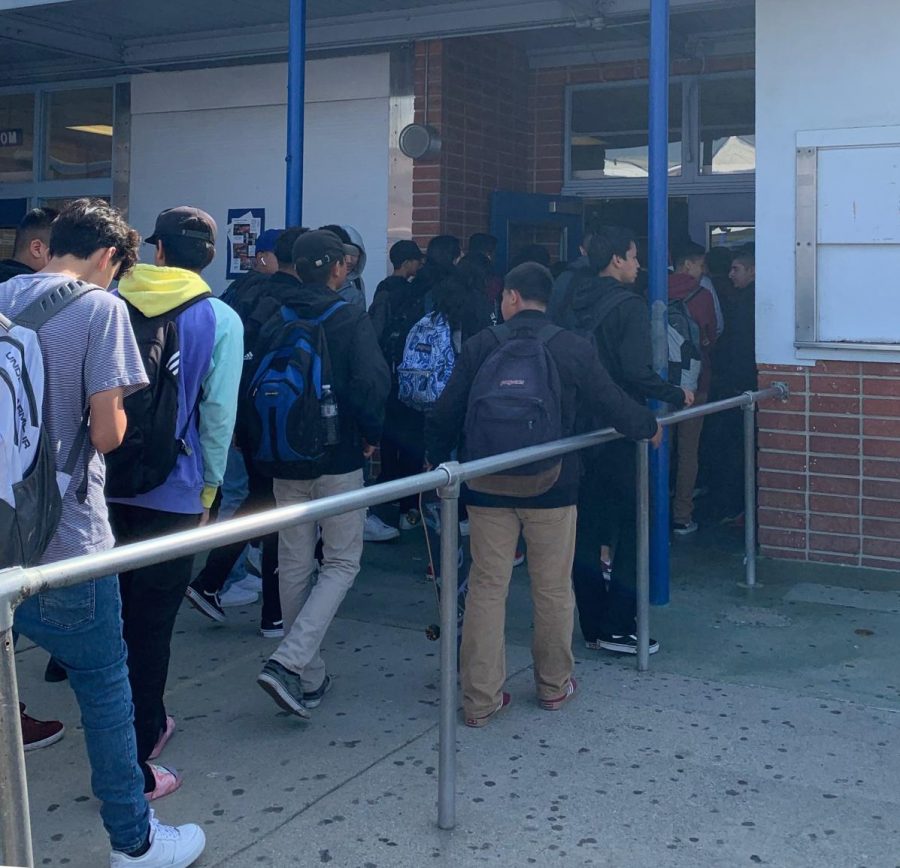Carrots and broccoli may never be a kid’s favorite food to eat during lunch.
Although a review of local school district menus shows healthier food options in recent years, some administrators note students don’t always choose to consume them. Meanwhile, interviews with some students indicate that might be because schools haven’t yet figured out how to make the healthy foods taste good.
“If a student takes all the items that are offered during a meal time, it is a good balanced meal,” Billie Saavedra, the food services director for the El Rancho Unified School District, wrote in an email.
As much as half of the food kids need each day is provided at school so that’s a key place for them to learn how to make healthy food choices, according to the Public Health Law Center.
The 2010 Healthy and Hunger-Free Kids Act aimed to help reduce obesity and other health risks for children – issues than can affect students’ social and emotional health as well as their academic performance – by effectively requiring school lunch programs to serve minimal sugar and sodium while providing vegetables, fruits and whole grains. “A recent Harvard study has concluded that, under the updated standards of the law, kids are now eating 16 percent more vegetables and 23 percent more fruit at lunch compared to 2010,” according to a 2014 United States Department of Agriculture press release.
However, that same year, the Government Accountability Office produced a report showing fewer students overall were eating lunch at school and recently, Agriculture Secretary Sonny Perdue rolled back some of the requirements of the law.
Isaiah Diaz, a sophomore at El Rancho High School, is one of many students who receives free lunch. “I don’t eat the lunch at school all the time. Some days I’ll just bring my own,” he said.
When Diaz is not dining in the cafeteria, he typically eats chips and a ham and cheese sandwich, washed down with a gatorade — all from home.
At a recent school baseball game, Diaz was chatting with Jason Aguilar, a sophomore, who described the vegetables at lunch as “weird looking” and “smelly.”
“Sometimes when I get lunch, the carrots and broccoli look…frozen, so I don’t bother eating” them, said Aguilar.
Aguilar and Diaz said they would like to see more options such as chicken tenders, chicken teriyaki with rice and better tasting vegetables and fruit.
On an average day, about 6,000 students are served school lunches across the El Rancho Unified School District, located in Pico Rivera. Nearly 74 percent of the 8,730 students enrolled in grades K-12 are eligible to receive free or reduced meals.
Meal entrees at the district include mini-cheeseburgers, baked spicy chicken sandwiches and pizza wedges. Sides include baby carrots, side salads, broccoli, fresh fruit and cupped fruit.
Beverages include water, juice and low-fat regular or chocolate milk.
When the new regulations on cafeteria food were given to school districts, all districts that met the requirements were given an extra $0.06 a meal.
Over the years, Saavedra said she is finding it a little easier to create meals that fit within required standards and guidelines.
“One of the biggest challenges was the whole grain requirement. It was difficult for manufacturers to make products that students would like,” she said.
When whole grain breaded products first came out, she said the color of the breading would be a little pale or discolored after cooking. Plus, whole grain products tend to be a bit denser and drier.
“It’s been getting better as manufactures reformulate recipes,” she said.
Students like Diaz are noticing. He said he enjoys eating the cafeteria’s hamburgers and chicken sandwiches: “I actually really like them. They are pretty bomb.”
The spicy and regular chicken sandwiches are breaded with whole grain and are baked, according to district officials.
Children’s meals at home influence what they choose to eat at school. About a third of young people eat fast food on a typical day, according to a summary of a peer-reviewed article by Debby Demory-Luce, professor at North Harris College, and Kathleen J Motil, Professor of Pediatric Nutrition at Baylor College of Medicine.
“School lunches have never been the problem. I think one of the main issues are families being on a busy schedule and trying to feed their families for fast and cheap. We can only do so much at our level,” stated Saavedra.
Saavedra believes more funding would allow the district to be more creative with nutritious meals:“If there was more funding, of course it would allow us to have more options.”








